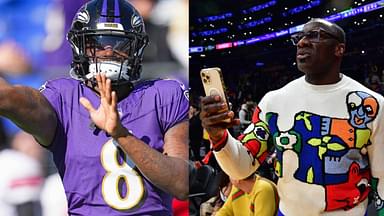The NBA has had a rough start to its 2025-2026 season. The basketball has been excellent, but the number of notable names who have gone down to injury is dire. Superstars are what draw viewers for this league. And these superstars are dropping like flies.
Advertisement
Shannon Sharpe even discussed this epidemic during the latest edition of his NightCap podcast. “We’re not even a month into the season. Giannis, Wemby, Anthony Edwards, Anthony Davis, Kawhi Leonard, Zion, Paolo Banchero, all sitting out with meaningful lower-body injuries,” stated the NFL legend.
Weighing in on the subject was Sharpe’s co-host and retired NBA sensation, Joe Johnson. The seven-time All-Star has some idea as to why these injuries are happening, and he thinks it has something to do with the current players not working as hard.
“I hate it for the game. Back when I first came in, guys was working. Guys were playing hard and practice hard. You weren’t just revving it up for the game,” stated Johnson, who further explained his viewpoint.
“I feel like now, in today’s game, guys are really just saving their legs for the game. You revving it up so high during the game, then you taking 2-3 days off, then you revving it back up? You bound to get some of these soft tissue injuries.”
It makes sense. As the NBA has grown, so has the money that goes into it. Organizations cannot risk their top assets getting hurt during a practice or a scrimmage. But what does it matter if the players bodies are not primed for actually gameplay? It’s a double-edged sword that the NBA is currently swallowing.
“I’m not sure if guys work as hard as guys used to,” added Johnson. Sharpe and co-host Chad Ochocinco basically confirmed that NFL practices and training camps are much more laid back, which has also not prepared them for those brutal Sundays.
Fortunately, the league is attempting to do something about it. NBA insider Shams Charania recently released a report unveiling how the NBA is planning to launch a biomechanics program to reduce these injuries from happening.
“More than 500 players have already gone through a level of testing. There are four rounds of biomechanics testing that still need to be completed for the rest of the season, and that’s going to be used to optimize performance and try to reduce injuries moving forward,” claimed Shams.
Regardless, the league finds itself at a crossroads, caught between protecting its stars and preparing them for the nightly battles that define the NBA’s appeal. The hope is that this new biomechanics initiative can bridge that gap, giving teams the data and insight needed to train smarter without sacrificing toughness or readiness.
Because if the NBA wants to keep fans invested and its brightest names on the floor, something has to change. And maybe, just maybe, this is the first real step toward rebuilding a culture built on durability, accountability, and the kind of work that keeps the game’s biggest attractions where they belong: center stage.






